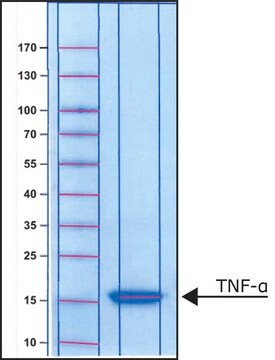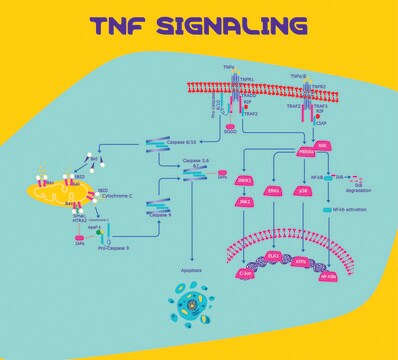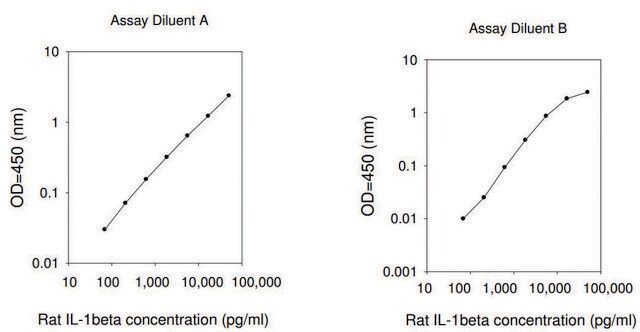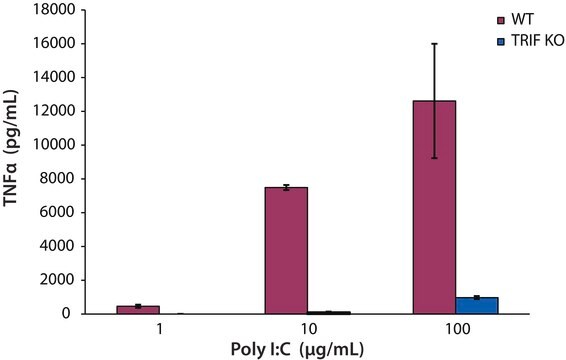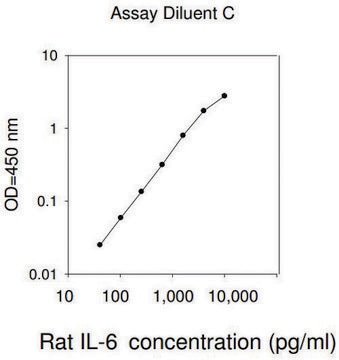T5944
Tumor Necrosis Factor-α from rat
≥98% (SDS-PAGE and HPLC), recombinant, expressed in E. coli, powder, suitable for cell culture
Sinónimos:
Cachectin, TNF-α
About This Item
Productos recomendados
product name
Tumor Necrosis Factor-α from rat, TNF-α, recombinant, expressed in E. coli, powder, suitable for cell culture
biological source
rat
Quality Level
recombinant
expressed in E. coli
assay
≥98% (SDS-PAGE and HPLC)
form
powder
quality
endotoxin tested
mol wt
predicted mol wt ~17 kDa
packaging
pkg of 10 μg
pkg of 50 μg
storage condition
avoid repeated freeze/thaw cycles
technique(s)
cell culture | mammalian: suitable
impurities
<1 EU/μgtested (LAL test)
color
white
solubility
water: soluble
UniProt accession no.
storage temp.
−20°C
Gene Information
rat ... Tnf(24835)
General description
Application
- To stimulate inducible nitric oxide synthase (iNOS) expression in the macrophages as an indication of M1 macrophage activation
- To study its effect on pancreatic β cell apoptosis
- To evaluate the effect of progesterone on the expression of tumor necrosis factor (TNF)-α in synovial membrane
- As a blocking antigen in the control, for immunohistochemical analysis
Biochem/physiol Actions
Physical form
Analysis Note
Storage Class
11 - Combustible Solids
wgk_germany
WGK 3
flash_point_f
Not applicable
flash_point_c
Not applicable
Certificados de análisis (COA)
Busque Certificados de análisis (COA) introduciendo el número de lote del producto. Los números de lote se encuentran en la etiqueta del producto después de las palabras «Lot» o «Batch»
¿Ya tiene este producto?
Encuentre la documentación para los productos que ha comprado recientemente en la Biblioteca de documentos.
Los clientes también vieron
Nuestro equipo de científicos tiene experiencia en todas las áreas de investigación: Ciencias de la vida, Ciencia de los materiales, Síntesis química, Cromatografía, Analítica y muchas otras.
Póngase en contacto con el Servicio técnico